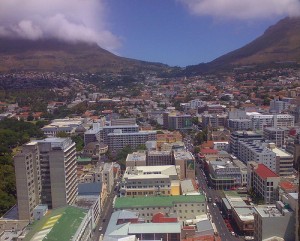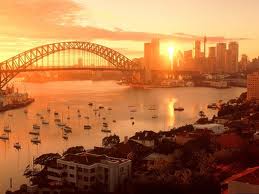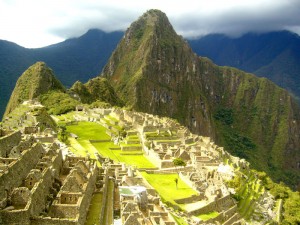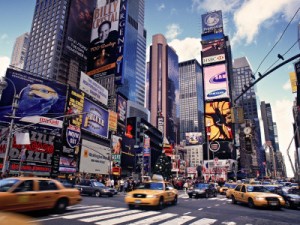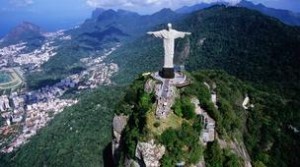This article is written by Shifra Menezes , a student and a travel writer based in Mumbai
Here’s a look at the top 25 destinations around the world that includes cultural capitals, architectural havens, beach paradises and some unconventional picks as well.
1. Cape Town, South Africa
The mere mention of most destinations in Africa immediately conjures up images of lion safaris and yellow wilderness as far as the eye can see. While these are enough to keep the intrepid traveller quite happy and offer the experience of a lifetime, there is more to Africa than just that and Cape Town is where it’s all at.
From cultural and historical attractions to wildlife and adventure sports, Cape Town has something for everyone.
A handful of the popular tourist attractions in Cape Town:
- The Victoria & Alfred Waterfront a popular haunt for dining and shopping, offering up a wide variety of cuisine and wares.
- The Kirstenbosch National Botanical Garden with its tranquil surrounds and exotic plants, is the ideal picnic spot for nature-lovers and trekkers alike.
- The beaches in and around Cape Town are famous for their soft white sand and crystal-clear waters. Some of the popular ones are Blouberg, Dolphin Beach and Boulder.
- If you’re an animal lover with a penchant for big cats, drop in at the Drakenstein Lion Park, dedicated to rehabilitating the beautiful animals in their natural surrounds.
- For history buffs, a boat ride to Robben Island, where Nelson Mandela was imprisoned for 18 years, is a must-visit.
2. Sydney, Australia
Often mistaken as the capital city, Sydney is the country’s largest city and arguably its cultural capital.
The unmistakable waterfront of the Sydney Opera House and Harbour Bridge is just one of the many tourist attractions in the city.
Your visit to the harbour city should include:
- Bondi Beach, one of the most famous in the world for its massive swells (for the surfers out there), is a great place to start. If you’re looking for a lazy day at the beach however, there are plenty to choose from such as Coogee, Manly and Balmoral among many, many others.
- Nature enthusiasts won’t be disappointed with a visit to Taronga Zoo, Oceanworld and the Royal Botanical Gardens.
- For those more culturally inclined, there’s the Sydney Festival (free indoor and outdoor performances), the Big Day Out (a travelling rock festival) and a number of film festivals.
- Check out breathtaking views from the AMP Tower observatory, the highest structure in Sydney, and the Powerhouse Museum of science, technology and design.
3. Machu Picchu, Peru
Tucked away in the Amazon forests, perched atop an Andean plateau, this ancient city is an architectural marvel. Often referred to as the ‘Lost city of the Incas’, it has been recognised as a World Heritage Site and one of the New 7 Wonders of the World.
Built around 1450, at the height of the Inca empire, the entire city has been constructed using polished dry stone and has survived the centuries remarkably well.
One of the three primary constructions within the city is the Intihuatana, a pillar built using stones that point to the sun. At noon on March 21 and September 21, the sun is almost directly above the pillar, and casts no shadow. It is believed that the Incas used this as a clock or calendar based on the sun’s path.
So for the traveller who enjoys a little history lesson along the way, Machu Picchu does just that.
4. Paris, France
The French capital offers a host of attractions including The Louvre, which is home to some of the world’s most valuable paintings and sculptures.
Food lovers can relish the French cuisine in the many bistros and cafes that dot the streets and culture vultures can take in the rich history and architecture on offer.
Some popular tourist spots include:
- The Notre Dame cathedral, the Napoleonic Arc de Triomphe, Champs Elysees and the Pantheon church (the final resting place of Voltaire, Victor Hugo and Marie Curie) are some of the most recognised landmarks, as is the Eiffel Tower.
- The Montmartre and Montparnasse areas, known for their artistic history is worth a visit for music halls and cafes.
- Known as the world’s fashion capital, drop in at the Avenue Montaigne and Faubourg Saint-Honore for a peek of the highest of high fashion. And if splashing out on designer labels isn’t your thing, don’t fret. Paris has a lot more shopping than just designer labels. Les Halles and the Champs Elysees have plenty to choose from.
- The picturesque Tuileries and Luxembourg Gardens are lovely for a stroll of picnic. A great way to unwind after a busy day of sightseeing.
5. Rio de Janeiro, Brazil
Movies and music have had a long-standing love affair with this beautiful city, and deservedly so. The spirit of Rio makes it a must-visit.
Another draw is the fact that the resort city will play host to the 2014 FIFA World Cup final and the 2016 Olympic Games and you can bet it’ll be an explosion of colour and dance two elements that simply capture what the city is all about.
So when you fly down, make sure your travel itinerary includes:
- The Copacabana and Ipanema beaches have been immortalised in song and well deserve a drop-by thanks to their many dining spots, pubs and discos.
- The Corcovado mountains with the statue of Christ the Redeemer are a major tourist draw being one of the New 7 Wonders of the World, and atop the peak, offer breath-taking views of the Brazilian landscape.
- The annual Carnival (during February and March) is an experience like no other. Massive parades along the streets with opulent floats and tens of thousands of revellers simply have to be seen to be believed.
6. New York City, USA
The city has been written about and sung about, movies have been shot around its iconic landmarks and its unmistakable skyline and yet it loses nothing in terms of sheer fascination for the millions of visitors and tourists who throng its streets every year.
So if you too plan to drop by the Big Apple, make sure to visit:
- Manhattan for its fantastic skyline and a glimpse of the Empire State Building, Rockerfeller Centre and Times Square.
- Ellis Island for the Statue of Liberty, and while you’re at it the Staten Island Ferry.
- Madison and Fifth avenue for the shopping.
- The Metropolitan Museum of Art and Broadway for some cultural stimulation
